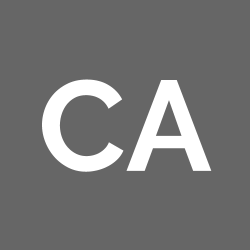Digital identity
/The first time I thought about managing my identity as a teacher was during my junior year in my teacher education program. The final project for my language arts methods class was a professional portfolio that included: a narrative about myself and my philosophy of teaching, my philosophy of classroom management (which was so ridiculous I am ashamed that I actually put it in print and let others look at it) and examples of exemplary lessons and other projects I created for my teacher ed. classes. I remember putting a lot of time and thought into this project because I knew it could potentially be something really cool/impressive to show during a job interview. At the time, my portfolio was quite the technological wonder. Yes, the deliverable was still a printed document (a book printed and bound at Kinko's), but I designed the entire thing on my Mac LC 520 computer. This was a stark contrast to how my classmates completed the project, which included a mix of word-processed and photocopied pages thrown together in a three-ring binder. I used a scanner and Clarisworks to make the entire portfolio have a consistent design throughout. At the time, it was quite impressive, and I think I still have a copy somewhere in a box in my parent's basement.
With all of the digital tools available now (17 years after I crafted my first portfolio!), there is no reason that preservice teachers shouldn't be able to put together a killer digital portfolio. While many of the principles for presenting a portfolio haven't changed that much, if at all, in 17 years, the tools we have access to for making one are lightyears beyond my little all-in-one Mac.
I entered the world of digital portfolios when I was teaching the class "Teaching with Technology" at the University of Virginia. I had my students create a digital portfolio using HTML, and they hosted it on their Home Directory. The project started off very clunky and frustrating and eventually became one that the students all loved and commented that they felt most satisfied with. I eventually abandoned NVU and Home Directory for Google Pages (now Google Sites), and the quality of the projects increased exponentially (not to mention the number of e-mails from frustrated students almost vanished). Looking back, the major drawbacks of this portfolio were that it focused on the projects only from my class and most of the students viewed it as an "assignment" rather than a tool that would continually evolve and could ultimately become an archive of their teaching careers.
My journey into the world of digital portfolios continued when I taught at the University of Illinois Springfield. The department I was teaching in (Teacher Education) had adopted TaskStream for the teacher candidates to use for building their digital portfolios, so I had to adopt this tool as well. Overall, it was pretty easy to use and the final product looked very professional. Besides the fact that the portfolio's format was very prescribed (meaning, it helped my department meet its objectives more than it helped the students meet theirs), the main drawback with TaskStream was that it cost money (not a little money, either), almost ensuring that 99% of the teacher candidates would not use it after they graduated. Once again, I was stuck in this rut of "assigning" a digital portfolio for a "grade," which means when the grade is given the assignment is done.
So, when I was asked to teach a section of "Computers in the Classroom" at the University of North Texas, I was once again in the position of thinking about how to structure my final portfolio project. Having a little more freedom than I did at UIS and having learned some lessons from UVA, I tried to improve my portfolio project. Here is the project description from last semester (Fall 2010). As you can see, it is still pretty "my-class-centric."
But it's amazing what one little blog post can do to spark some new ideas. I taught concurrently with Wes Fryer last semester, and we were constantly bouncing ideas off each other. He addressed digital portfolios in one of his posts, which helped me develop my latest iteration of my digital portfolio project. Here is my latest project description, which I am pretty happy with at this point. I'm sure once my students get their hands on it I will see some areas that need clarification or revision. The obvious weakness of the current version is my rubric (which really isn't a rubric), which I will definitely be revising.
So, do you give a final portfolio assignment? How structured/open is it? What elements do you have students include that I have overlooked?

